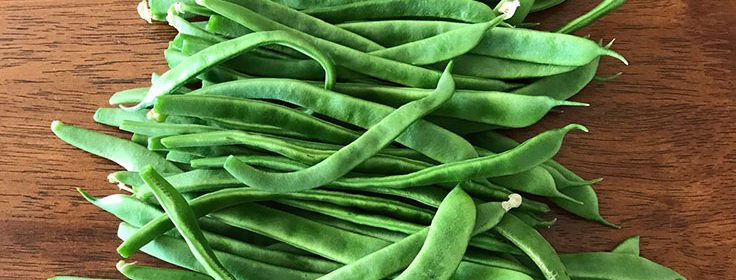May 12 Column: How to Grow Beans

Do you grow beans in your garden? They are one of my favorite vegetables. Why? They are so flavorful and abundant enough to also give you plenty to preserve for fall and winter eating. In my column in today’s edition of The Spokesman-Review, I share tips for successfully growing bush and pole beans. Here’s a link to it: Placement counts when it comes to growing beans. (or you can read my column lower in this post)
To be honest, I prefer growing pole beans because it’s fun growing them on the arbor in our garden. Many of you have seen our bean arbor, but just in case you haven’t, check out the photo! (and remember that you can click on it to view a larger image)
I get a lot of questions asking where we bought our arbor. It’s actually 4 individual trellises that I bought in a Fred Meyer garden center many years ago. The amazing thing is that they had marked all of their trellises 50% off. And that was at the beginning of the garden season! Talk about great luck.
The year before, I had a revelation. I should grow our beans on a support that spans a pathway between two raised beds. Once we put the bean arbor in place the next spring, I made some discoveries. First, the beans primarily hang down on the inside making it easier to find them. Second, you get to stand in the shade on a hot summer’s day while picking them! You know, I don’t have a lot of “aha” moments but this was a good one!
In my video for this week, I take you through the steps of growing green beans. In it, there are plenty of tips from what I’ve learned over the years. Have a look:
Grow Beans garden column:
by Susan Mulvihill
Green beans are one of my favorite vegetables to grow. These attractive and productive plants deserve a place in every vegetable garden.
The two types of green beans are bush and pole. They are equally easy to grow. It just depends on whether you’d prefer small, compact plants or tall vines that require a support to climb on.
My favorite bush bean cultivars include Provider, Jade and Maxibel. In my opinion, the best pole bean is Musica, also known as Spanish Musica. I should add that Blue Lake and Kentucky Wonder are reliable producers as well.
Beans have large, kidney-shaped seeds. Many years back, I learned an interesting tip for getting the best possible germination, or sprouting. When it comes to planting large, irregularly-shaped seeds, it’s important to orient them in the correct direction.
Think of seeds as being little packets of energy. They use energy to send a root down and a sprout up toward the surface of the soil. If a seed is planted upside-down, there’s a problem. It often uses up that energy trying to correctly orient itself and will often die in the process.
If you plant bean seeds with the little scar, or belly button, facing downward, they will sprout easily. While this might seem like a tedious extra step, it has made a huge difference in the germination rate of my seeds.
You can start beans directly in the garden after all danger of frost has passed — usually in mid-May — or indoors two weeks ahead of time. If you go with the latter method, resist pulling the seedlings out of their containers by their stems when transplanting them as this can seriously damage or even kill them. Instead, slip a screwdriver or chopstick alongside the edge of the root system and gently lift up the whole plant.
Bush bean plants should be spaced 6 inches apart. Since pole beans grow vertically, they only require a 3-inch spacing.
When choosing a support for pole beans, think tall and strong. The best supports are at least 6 feet tall since the vines grow profusely. My favorite support is a series of four trellises that form an arbor and span a pathway between two of my raised beds. I purchased them from a local home center. Since they are made of powder-coated steel, they should last a long time.
Another option is to create an arch with a livestock panel which is available at farm supply stores. The panels are inexpensive (about $25), made from heavy-duty galvanized wire, and 4 feet wide by 16 feet long.
During bean-harvesting season, be sure to pick the beans while they’re young and tender. This serves two purposes: they will be very flavorful and the more you pick, the more the plants produce.
Did you know beans are easy to freeze for later use? By blanching them — which involves boiling the beans for two minutes and then plunging them into ice-cold water — they will retain their flavor and freeze beautifully. Just drain them and pop the beans into freezer bags.
Bean seeds are simple to save for future garden seasons as well. Leave some pods on the plants until they are very dry and you can hear the seeds rattling around inside. Bring the pods indoors for about two weeks until the seeds become hard. Remove the seeds from the pods, place them in a jar or bag, and store them in a cool, dark location.


